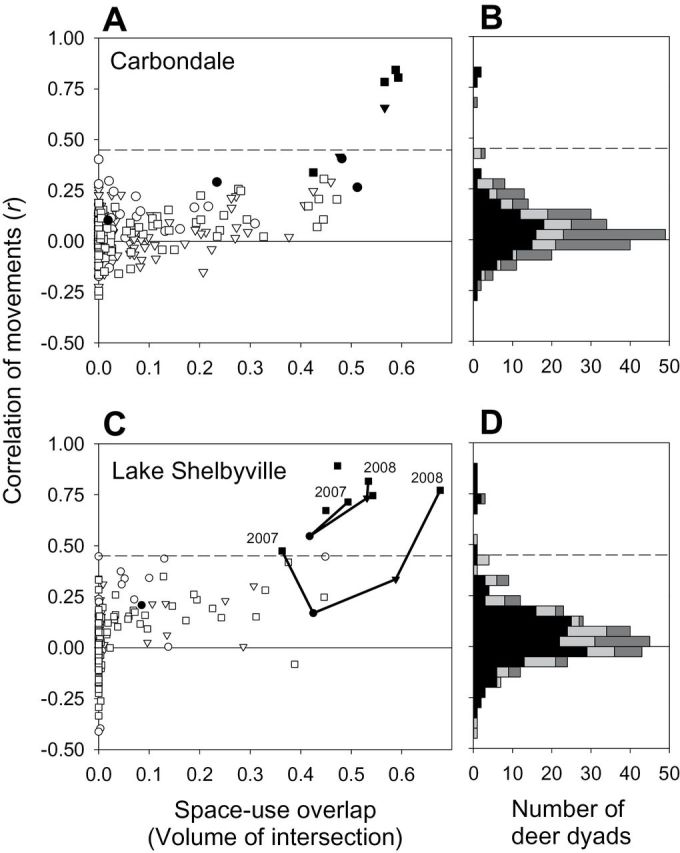Fig. 3.

Movement and space-use criteria used to assess group membership status of GPS-collared white-tailed deer (Odocoileus virginianus) from study areas near a and b) Carbondale, Illinois, (October 2002–June 2006) and b) and c) Lake Shelbyville, Illinois (January 2006–June 2009). a and c) Relationship between correlation of movements and space-use overlap (measured by volume of intersection of fixed-kernel utilization distributions). Each symbol represents 1 deer dyad and seasonal period (triangle = autumn, square = winter–spring, circle = summer). Symbol fill indicates the group status of the dyad (filled = within-group, open = between-group). Note that the same dyad may be present in > 1 seasonal period. Two within-group dyads from Lake Shelbyville site provided data from February 2007 to June 2008; sequential data points for each of these dyads are connected by lines, allowing comparison between years. b and d) Frequency distribution of correlation coefficients for seasonal movement (black = winter–spring, light gray = summer, dark gray = autumn), indicating the rarity of coefficients > 0.45 (dashed line indicates the criterion for within-group status).
